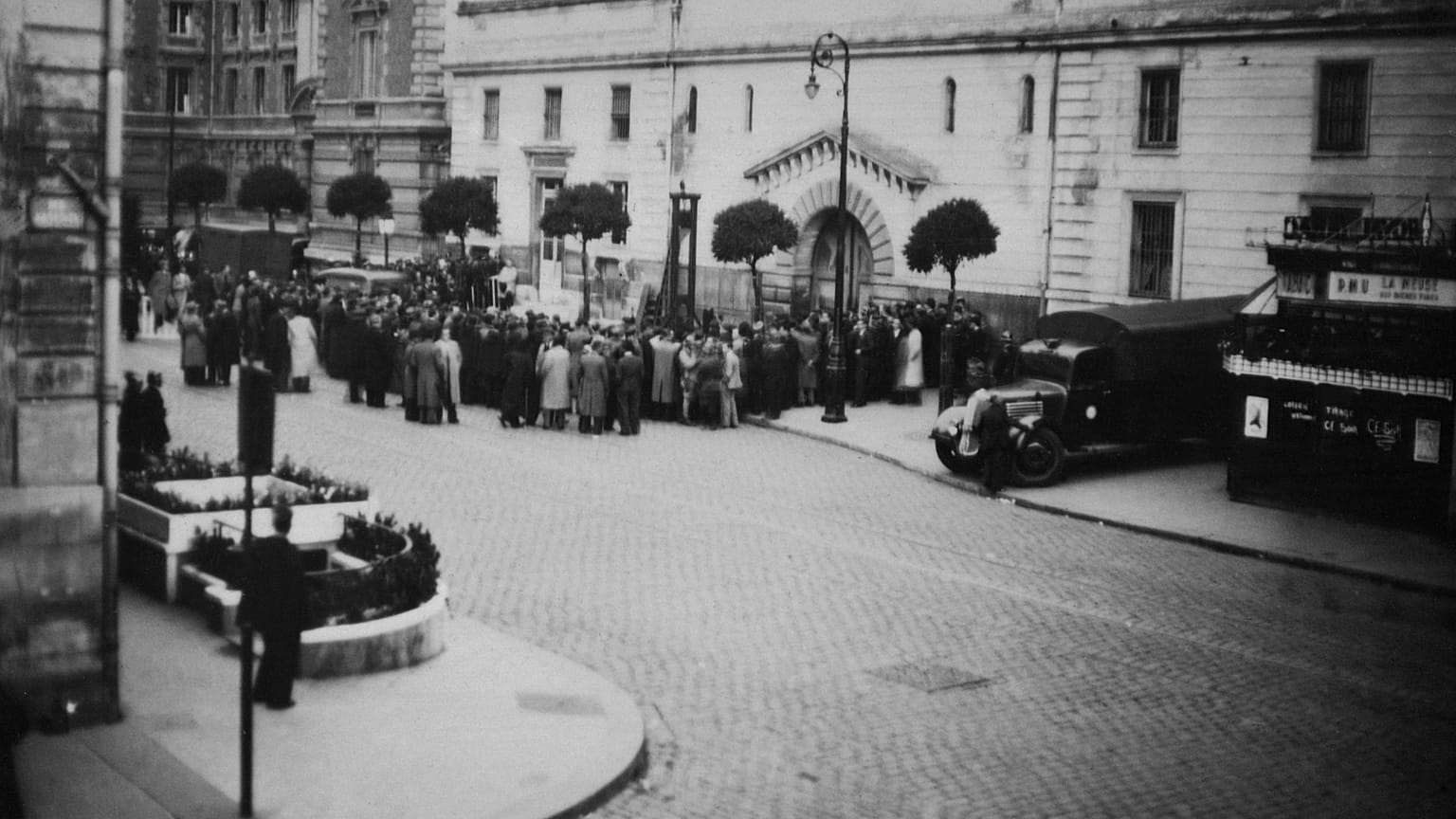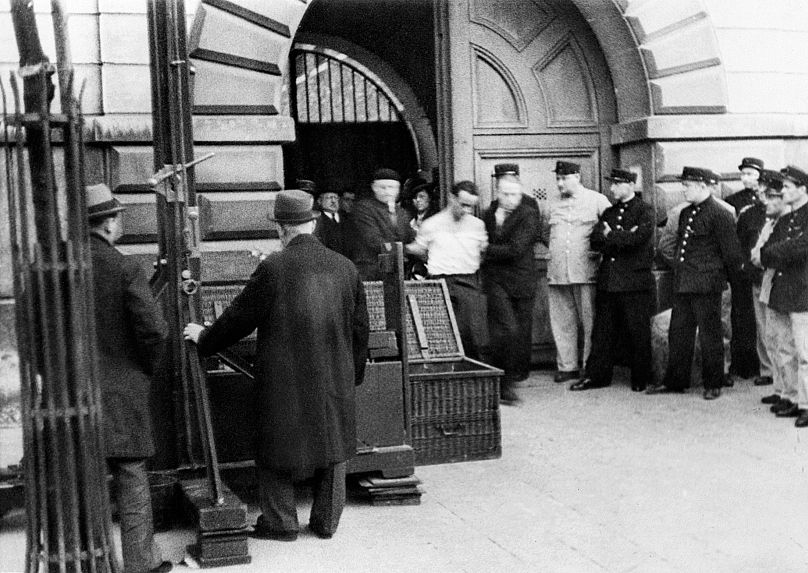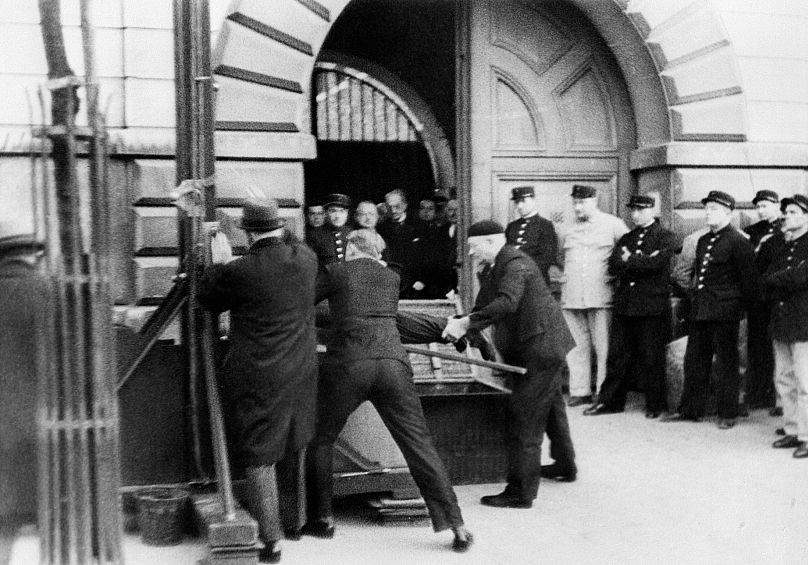80 years ago, a crowd gathered for what was to become the last public execution by guillotine in France — a grim spectacle that was captured on film.
Eighty years ago on Monday, a crowd gathered to watch what was to become the last public execution by guillotine in France — a grim spectacle that was captured on film.
Onlookers lined up for hours to be in the front row to see the blade fall on the neck of convicted murderer Eugen Weidmann.
His execution took place in front of the doors of the Saint-Pierre prison, in the centre of Versailles, on June 17, 1939.
Executions were supposed to take place before sunrise, but dealing with the crowd delayed preparations and reporters were able to take photos and even film the event.
The shocking images and the behaviour of the baying crowd led France to banish the use of guillotines to within prison walls until their final use, in 1977.
Weidmann, a 31-year-old German with a string of previous criminal convictions, was sentenced to death for six murders committed in France with three accomplices. Among their victims was an American dancer who had come to Paris to visit the 1937 World's Fair.
The condemned man was led out with his hands tied behind his back and white shirt turned down to keep his neck clear.
Among those watching was the future Dracula actor Christopher Lee, who was then 17. He was attending with a friend of his family who was a journalist.
In his autobiography, he described the "powerful wave of howling and shrieking" that greeted Weidmann’s appearance on the street.
He said he could not bring himself to watch Weidmann’s execution. "I turned my head, but I heard," he told a documentary in 1998.
Lee recalled how spectators "rushed to the corpse” and some “did not hesitate to soak handkerchiefs and scarves in the blood spread on the pavement, as a souvenir.”
Another witness, Marcel, who was 15 at the time, described similar scenes in an interview with AFP in 2001.
The guillotine was “quickly dismantled, the pavement quickly washed with water," and life resumed its course "with the passage of the first tram and the reopening of the two neighbouring cafes.”
But French leaders were concerned that the images and descriptions circulated overseas gave a poor image of France and President Albert Lebrun moved to end public executions.
In a decree on 24 June, 1939, future executions were limited to “the premises of the penitentiary establishment" and would be witnessed only by officials including magistrates, doctors, police and a priest.
But it was many decades before guillotines were outlawed altogether. The last bladed execution of a death row inmate in France was on September 10, 1977, when Hamida Djandoubi was guillotined in the Baumettes prison in Marseille. The death penalty was definitively abolished in 1981.

















